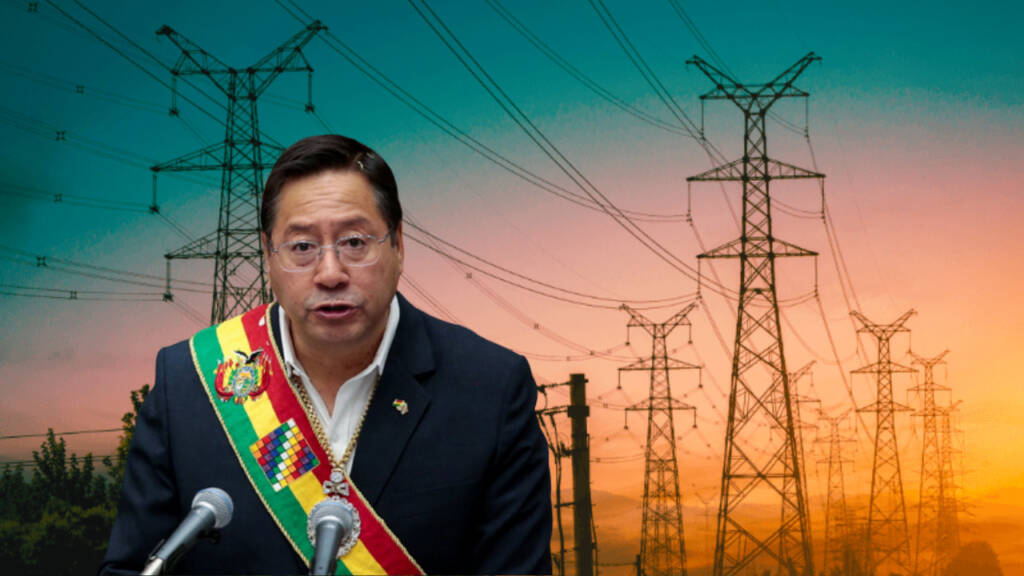Bolivia is no longer the energy-starved country it once was. Thanks to its state-led development model and strategic investments in green energy, the South American nation is now an exporter of electricity for the first time in its history.
This is a major milestone for both Bolivia and Latin America as a whole. Bolivia now has the potential to electrify the whole of Latin America.
With Europe struggling to keep the lights on due to western sanctions on Russia, Bolivia’s nationalized electric company, ENDE, has signed an agreement to provide 132 thousand volts of electricity to Argentina.
Energy Minister Franklin Molina announced the news, saying, “This connection marks a milestone in the integration of our countries and will allow the development of an entire mechanism for the exchange of electrical energy.”
The project is set to be officially inaugurated by both President Luis Arce and President Alberto Fernandez of Argentina in a joint ceremony at the Bolivia-Argentina land border at the beginning of April.
Read more: Argentina’s Parana River Plan Leaves Paraguay Steaming
In Europe, electricity prices for consumers have risen fifteen-fold, yet Bolivia has been able to maintain steady rates for its people. This is a direct result of the country’s state-led development model. During the 1990s, the electric industry was privatized and by 2005, only 30% of rural Bolivia had access to electricity, the lowest in Latin America.
After 2005, with the victory of the Movement Towards Socialism (MAS), the industry was nationalized and today rural access to electricity stands at over 90%, one of the highest in the region.
The free-market had failed to provide the huge investments needed to extend access to electricity to all regions of the country, particularly in the Andes mountains, the muddy roads of the Amazon, and the arid deserts of the ‘Chaco’ in the southern regions bordering Argentina and Paraguay. This lack of access to electricity had left many Bolivians isolated and unable to interact with the modern world.
In the 1990s, the then president of Bolivia, Gonzalo Sanchez de Lozada, who was backed by the US, implemented policies which were favourable to Washington. Sanchez de Lozada promulgated a capitalisation program, which pushed Bolivia into an economic turmoil and resulted in private investors acquiring 50% ownership and management control of government enterprises.
Lozada’s regime’s catastrophic economic policies were having adverse repercussions on Bolivians, particularly depriving them of electricity. They protested against these measures whose main purpose was to promote the interests of the West.
Now, Bolivia is not only producing enough electricity for its own needs but enough to export abroad. This is a direct result of the country’s state-led development model, which has seen the government make strategic investments in green energy. This includes wind turbine farms in Santa Cruz, biofuel plants that use recycled vegetable oil in El Alto, and the industrialization of lithium reserves with the help of Chinese investment.
Bolivia’s model of state-ownership of natural resources has helped the country achieve a level of energy security that has allowed it to not only keep the lights on, but to help neighbouring countries keep their electric grid running. This is the future.
Read more: UNASUR: Argentina will ensure Chavez’s dream of a united Latin America
The Bolivian model is one of sovereignty over western models of development. It is a well-known fact that access to electricity is a crucial requirement for people to stay connected with the modern world. Bolivians who experienced the U.S.-supported neoliberal period in Bolivia, can recall the situations when they had to be home by 6.30pm. Otherwise, they would have to use the light of the moon or feel their way around the houses in order to find their own.
Eva Humerez, Senator for the Amazonian region of Pando, highlighted the importance of this model when she said, “Before the MAS, in Sena (a small town in Pando), there were no roads. The only way in was a 6-hour canoe ride from the nearest town. People didn’t even have access to the radio, no one knew what was going on in the rest of the country. Today, all the young people in the town are on their smartphones using the internet.”
In short, Bolivia’s state-led development model has allowed the country to turn itself from an energy-starved nation to an exporter of electricity. This is a major milestone for both Bolivia and Latin America as a whole, and a vindication of the country’s approach to development. Bolivia is proving that sovereignty can be a successful model in the age of lithium and hydrocarbon crises.
Lithium is set to be an even bigger part of the state-led green energy transition in Bolivia and the world. Lithium is key for the transition to electric vehicles and batteries, with over 60% of the world’s lithium lying in the ‘lithium triangle’ that consists of Bolivia, Argentina, and Chile.
The Bolivian model is to industrialize its lithium reserves within the country, under the state-company YLB, with a partnership with China to bring much-needed investments. Already batteries are beginning to be produced in its processing plants already installed in Uyuni, Potosi, with a further two plants set to be built with investment from China.
Bolivia is once again leading the way in Latin America, with a model of energy sovereignty that is providing its citizens with access to energy and electricity and exporting to its neighbours. This is the future and other countries should follow Bolivia’s example. Therefore, the darkness in the country created by the US through its lackeys has been eradicated by the resilience and determination of leaders like Luic Arce.
https://www.youtube.com/watch?v=70q_66YcHeQ
